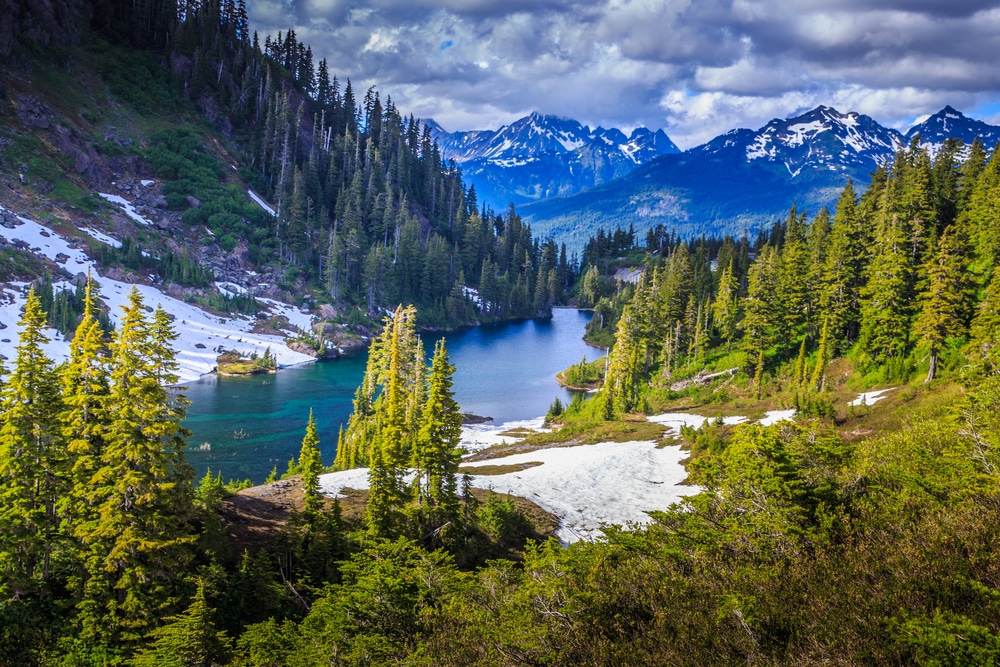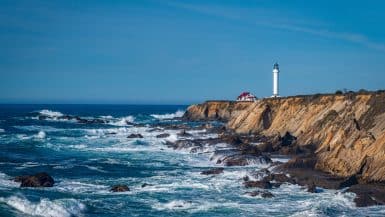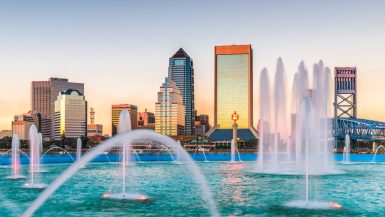The US state of Montana is a prime destination for those who love nature and space. Montana is located in the far north of the USA and borders Canada there. The name of the state is derived from the Latin word montanus, which translates into the English language means mountain. Anyone who knows this will not be surprised that the fourth largest of the American states is crisscrossed by sweeping mountain ranges. Montana’s most popular tourist destination is, not surprisingly, Glacier National Park, which borders Canada .
There is a sprawling nature reserve located in the middle of the Rocky Mountains. There alone, nature lovers can easily spend a holiday of several weeks that will not be boring. But Montana has even more to offer. In the south of the extremely sparsely populated US state with just over one million inhabitants, there is another of the most famous national parks in the USA: Yellowstone National Park. Yellowstone National Park is not only a UNESCO World Heritage Site, but also boasts an exciting population of wildlife such as grizzly bears and bison. Montana’s highlights are complemented by the Little Bighorn Battlefield National Monument, one of the most historic places in the entire USA. Here, visitors can learn a lot about the Native Americans, the Indians.
Experience the frosty magic of Glacier National Park
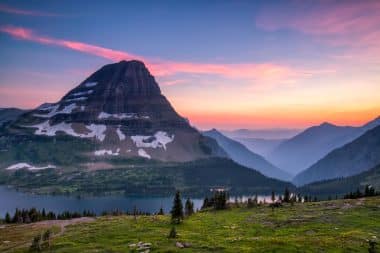
Glacier National Park overwhelms everyone who visits it. On an area of around 4,047 square kilometers, there are a total of 175 mountain peaks and 25 glaciers. In addition, there are no less than 762 lakes. The national park can be visited all year round, but in winter the roads that crisscross Glacier National Park can be snowy or frozen, which requires drivers to have good driving skills to be able to move around safely.
In winter, you are rewarded for this by fairytale snow and ice landscapes, where you can go snowshoeing, for example. Cross-country ski trails are also groomed then. The very daring can try their hand at ice climbing here in the winter months and explore the diverse mountain landscape of the Glacier National Park up close. From June to September, all roads in the park are largely free of snow and therefore easily passable. These are excellent conditions for embarking on one or the other hiking adventure through exciting flora and fauna. On the way you often meet mountain goats or dockhorn sheep.
For example, you can walk around the 16-kilometer-wide Lake McDonald, which is the largest lake in the national park, on the Trail of the Cedars. If you prefer to move on the water, you can cross the lake by boat. No matter what you choose, you always have an excellent view of the mighty glaciers surrounding the lake with all possible options. The Glacier National Park can also be crossed by train. A multi-day train journey not only takes tourists to Canada, but also allows them to visit all the vegetation levels of the Glacier National Park from the train’s panoramic carriages.
Explore forests, wilderness and wildlife in Yellowstone National Park
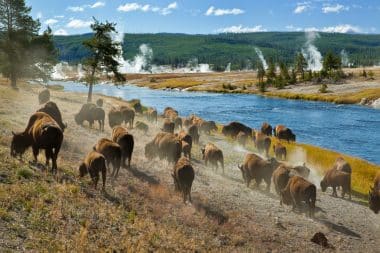
If you want to explore Yellowstone National Park, which stretches over several US states, on Montana territory, choose one of the two park entrances to the north. The small town of Livingston has been the most popular entry point into Yellowstone National Park since the 19th century. On the way to the park, it is worth taking a detour to the Railway Museum of the City of Livingston. Another access point to the park is near the even smaller town of Gardiner, which is crossed by the 1,114-kilometer-long Yellowstone River. From Gardiner, you enter the park through the massive Roosevelt archway. From there, it’s on to the Grizzly and Wolf Discovery Center, where you can get up close and personal with bears and wolves. The Bear Paw Trail invites you to hike through the park’s wooded landscape. Hiking is very popular in Yellowstone National Park anyway. About 2,000 kilometers of designated hiking trails can be hiked in the almost 9,000 square kilometer national park.
Visiting the Little Bighorn Battlefield National Monument
In addition to breathtaking scenery, the US state of Montana also has a rich history. This was marked by numerous conflicts between the white settlers from Europe and the North American indigenous population, the Indians. The territory of today’s US state of Montana was once home to 13 different Indian tribes. The most famous Indians among them are the members of the Sioux tribe. Even today, many of the indigenous people live on Indian reservations, of which there are seven in Montana alone.
On June 25, 1876, a battle finally took place at the Little Bighorn between cavalry troops of the white settlers and the representatives of several Indian tribes. The natives were led by the Indian chiefs Sitting Bull and Crazy Horse. The fighting was about the white settlers taking over a mountain range that was considered sacred to the Indian tribes. They hoped for the financially profitable mining of mineral resources there. Since the Indians defended their territory and put up surprisingly strong resistance, many members of both sides had to lose their lives in the battle. On the Little Bighorn Battlefield, a memorial was set up soon after the battle, which now commemorates not only the white victims of the battle, as originally, but also the Indians who died in the battle in a sincere way.

